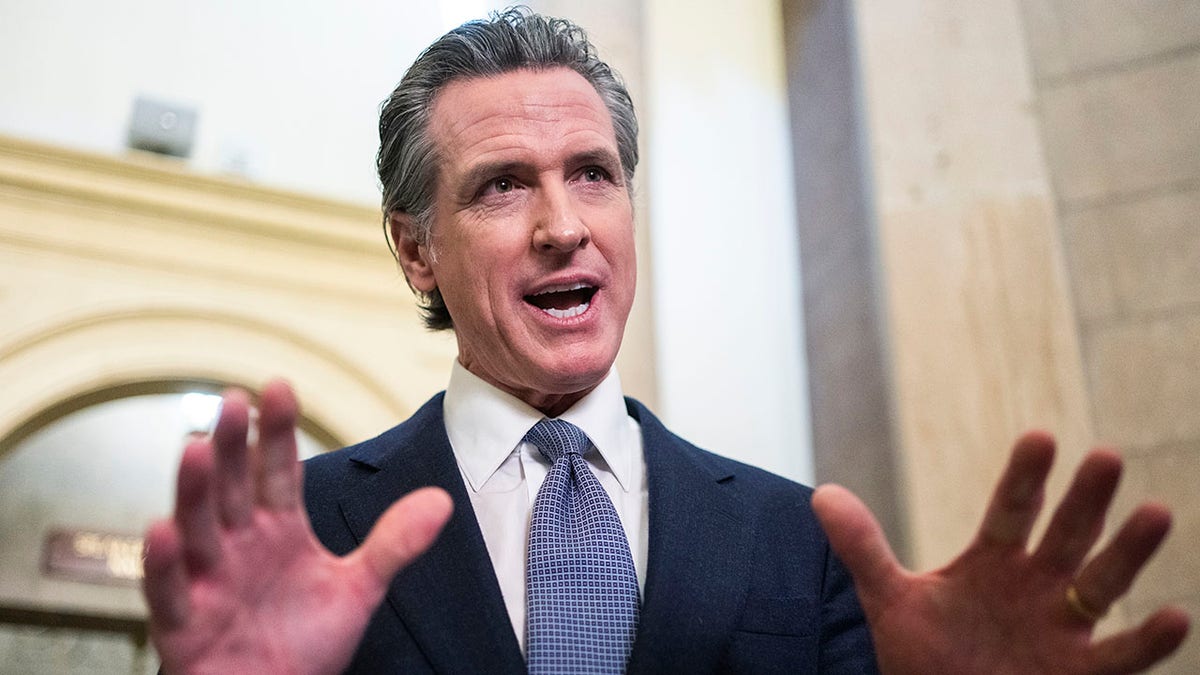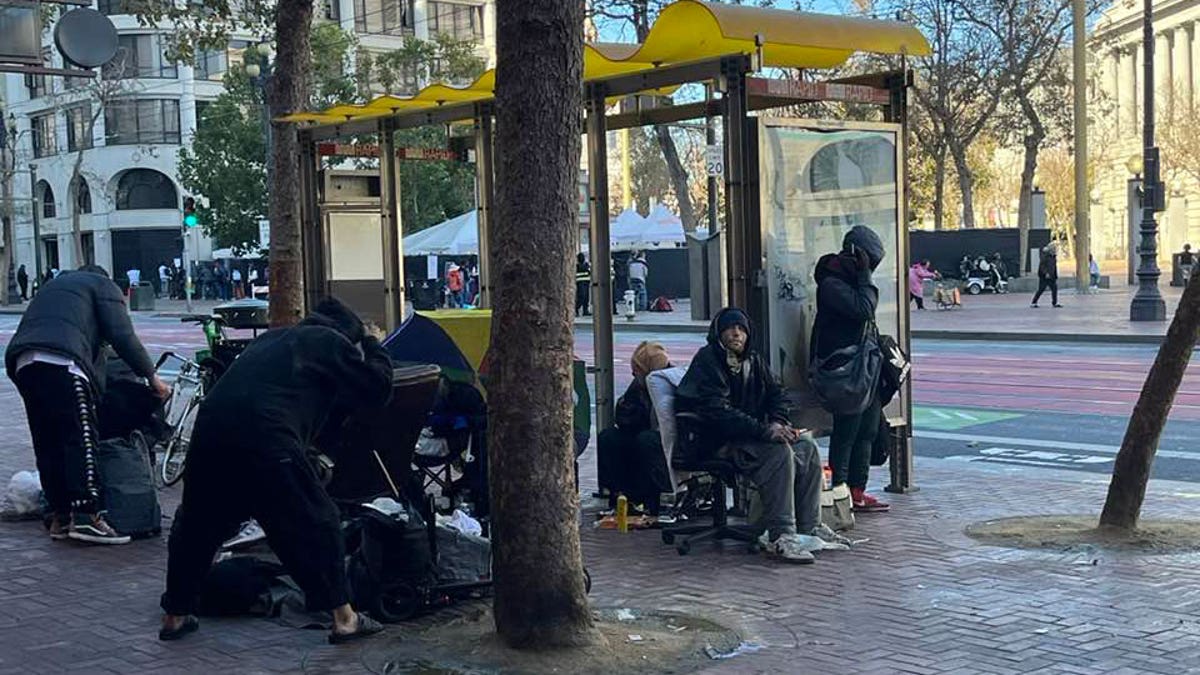Fox News Flash top headlines for February 3
Fox News Flash top headlines are here. Check out what's clicking on Foxnews.com.
SAN FRANCISCO — As the cold fury of the January storms ripped through San Francisco’s Tenderloin district — the epicenter of the state’s drug and homelessness crisis — much of the trash and drug paraphernalia debris had washed away.
But within minutes of the storms subsiding, the open-air drug use and the drug dealer huddles re-appeared. Debris, including drug paraphernalia and human feces, began to litter the streets again. Panhandlers quickly followed, as tourist traffic picked up.
Nothing changed, really.
It’s a predicament with which California voters are all too familiar, and with which Gov. Gavin Newsom appears to be fed up.

California Gov. Gavin Newsom's homelessness strategy has been a disaster. (Tom Williams/CQ-Roll Call, Inc via Getty Images)
"Californians demand accountability and results, not settling for the status quo," Newsom said in a recent statement as he announced his new budget. "As a state, we are failing to meet the urgency of this moment."
Yet the homelessness industry he’s helped establish — first as mayor of San Francisco, then as governor of the Golden State — isn’t designed to achieve meaningful results. Called "Housing First," it’s a model that explicitly rejects accountability.
Initially instituted in 2013 at the federal level as a one-size-fits-all approach to homelessness — with the unambiguous promise it would end homelessness in a decade — California became the only state in the country to also adopt it in 2016.
Its champions opined that homelessness is "solved" by providing people with permanent housing without conditions — no sobriety, no expectations of even the most basic of standards of behavior and cleanliness and no expectation of work, ever.
In other words, no expectation of change, ever. Predictably, it’s not working.
Pre-pandemic data from the Department of Housing and Urban Development (HUD) revealed a 20.5% increase in the unsheltered population and a 47.1 % increase in unsheltered homelessness in California under Housing First. These trends unfortunately continue in the post-pandemic era.
Human beings and communities are perishing. A conservative estimate from the New York Times puts the death toll of California’s homeless population at 4,800 in 2021. According to the Jama Network, approximately one unsheltered person per day takes their final breath on the streets of San Francisco. The Times adds that in Los Angeles County, "the unsheltered died in record numbers, an average of five deaths a day, most in plain view of the world around them."
But there’s hope — real hope. When the underlying diseases of mental illness and addiction are addressed (diseases that are either a precursor to or are a result of homelessness), we can redeem lives, families, and communities.
But within minutes of the storms subsiding, the open-air drug use and the drug dealer huddles re-appeared. Debris, including drug paraphernalia and human feces, began to litter the streets again. Panhandlers quickly followed, as tourist traffic picked up. Nothing changed, really.
Ask Tom Wolf. Up until 2018, Tom was a heroin addict who was "homeless and hopelessly addicted" on San Francisco’s streets. Thanks to local law enforcement who saw something in Tom that he could not see, and thanks to their "gift" of jail time that allowed him to detox and clear his head — followed by a six-month stay in a therapeutic, sober environment — Tom is five years sober today. He is reunited with his wife and children and is now working the streets he once called home to help free others from the misery and grips of that life.
Or ask Adrianna Granlund, a recovering alcoholic, drug addict and formerly homeless mother. Like most people experiencing homelessness, Adrianna had burned through her safety nets of family, friends, and community. "After years of addiction, my family didn’t want anything to do with me."
CLICK HERE TO GET THE OPINION NEWSLETTER
"At one point, I was gifted ‘permanent housing,’ but because there were no conditions such as sobriety, my addiction spiraled out of control. Child Protective Services eventually took custody of my children, which in turn, fueled my eviction from our families-only housing unit."
Adrianna eventually found her way to Saint John’s — a Sacramento-based program for homeless women and children that I ran for 13 years. She arrived exhausted and "out of her best ideas." Through intensive therapy, onsite groups such as Alcoholics and Narcotics Anonymous, and our high expectation/high accountability framework, a spark was ignited in Adrianna. Her spark grew as she lived side-by-side with other women struggling with similar issues. They became her biggest cheerleaders, but they also kept her accountable.

San Francisco bus stop crowded by homeless people. (@EricaJSandberg/Twitter)
Today, Adrianna has five years of sobriety. She works as an alcohol and drug counselor (and just made supervisor). She has custody of her children and owns a home. "I needed accountability," she said. "Without it, I’d still be out there on the street."
CLICK HERE TO GET THE FOX NEWS APP
The vacuum of accountability in today’s homeless system — from the individual level to the non-profit level to the local government level to his level — is exactly why Newsom won’t see the results he’s demanding. "Status quo maintenance" is the cornerstone of his $16 billion investment in homelessness, and he is certain to achieve it.
Just ask Tom and Adrianna.






















